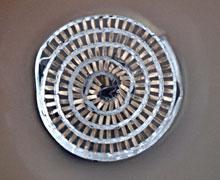Controlling prosthetic limbs with electrode arrays
April 26, 2011 | Source: Technology Review

This scaffold, augmented with electrodes, is designed to transmit electrical signals between an amputee’s nervous system and prosthetic limb (credit: Ravi Bellamkonda, Georgia Tech)
To give amputees better control over prosthetic limbs, researchers at Georgia Tech have designed a tubular support scaffold with tiny channels that fit snugly around bundles of nerve cells.
The scaffold begins as a flat sheet with tiny grooves, similar to corrugated iron or cardboard. It is then rolled to form a porous cylinder with many tiny channels suited for healthy nerve-cell growth.
The floors of the conduits double as electrodes, brushing up close to the nerve bundles and picking up nerve signals.
The researchers said the ultimate goal is to enable two-way communication between the prosthetic limb and the wearer. Eventually, this “jellyroll” design could separate the two kinds of nerve cells within a bundle, so neural cues directing hand movement would travel along one channel and information about touch and temperature from the prosthetic limb would travel to the brain along another channel, the researchers said.